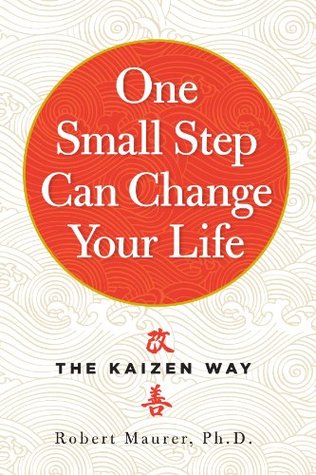More on this book
Community
Kindle Notes & Highlights
Read between
January 23 - January 26, 2019
the power of kaizen: using small steps to accomplish large goals.
David Kadavy and 1 other person liked this
· Flag
David Kadavy · Flag
Michael Pozdnev
standing from a sitting position doubles your metabolic rate. Go for even a short walk and you have more than doubled the rate
small and doable.
A Taiwanese study of 416,000 adults found that those who exercised 15 minutes a day lived three years longer than those who exercised less.
those 15 minutes do not have to be done all at once! Exercising for 3 minutes at a time, adding up to 15 minutes or more, can have clear and dramatic health benefits.
easy and painless that Julie knew she could not fail.
service and gratitude.
“You can’t live a perfect day without doing something for someone who will never be able to repay you.”
“Let no one ever come to you without leaving better and happier.” —Mother Teresa
“A journey of a thousand miles must begin with the first step.” —Lao Tzu
Don’t look for the big, quick improvement. Seek the small improvement one day at a time.
kaizen asks is that you take small, comfortable steps toward improvement.
“How about if you just march in place in front of the television, each day, for one minute?
sixty seconds of low-intensity exercise.
“What else can I do in one minute a day?”
that low-key change helps the human mind circumnavigate the fear that blocks
success and creativity.
master the smallest steps of change in a safe, nonthreatening environment.
“The steps were so small I couldn’t fail!”
the small-steps philosophy.
bestowing small rewards to yourself or others to produce the best results
recognizing the small but crucial moments that everyone else ignores
all you need to do is take one small step.
The fight-or-flight response
large goal ➞ fear ➞ access to cortex restricted ➞ failure small goal ➞ fear bypassed ➞ cortex engaged ➞ success
turning their fear into another emotion: excitement. The bigger the challenge, the more excited and productive and thrilled they become. You probably know a few people like this. They come to life when they sense a challenge. But for the rest of us, big goals trigger big fear.
Small, easily achievable goals—such
After a few weeks of very limited exercise, she was shocked to find herself exercising even when she didn’t have to. Those first small steps laid down the neural network for enjoying the change.
defeat the fear of change
Children know they live in a world they cannot control.
Adults, I believe, assume that if they are living correctly, they can control the events around them.
When fear does appear, it seems all wrong—so
If your expectation is that a well-run life should always be orderly, you are setting yourself up for panic and defeat.
When life gets scary and difficult, we tend to look for solutions in places where it is easy or at least familiar to do so, and not in the dark, uncomfortable places where real
Don’t let these common roadblocks to change make you feel so guilty or frustrated that you give up your attempts to improve.
use times of difficulty to remember that fear is the body’s gift, alerting us to a challenge.
The more we care about something, the more we dream, the more fear shows up.
gently acknowledge the fear and its effects on us.
“Can you think of a very small step you might take to improve our process or product?”
“What shapes our lives are the questions we ask, refuse to ask, or never think to ask.” —Sam Keen
If health were my first priority, what would I be doing differently today? What is one way I can remind myself to drink more water? How could I incorporate a few more minutes of exercise into my daily routine?
Your brain loves questions and won’t reject them . . . unless the question is so big it triggers fear.
“What’s the smallest step I can take to be more efficient?” or “What can I do in five minutes a day to reduce my
allow the brain to focus on problem-solving and, eventually, action. Ask a question often enough, and you’ll find your brain storing the questions, turning them over, and eventually generating some interesting and useful responses.
“writer’s block” is actually fear.
The question you’ve asked yourself is too large and frightening.
Michael Ondaatje, author of The English Patient, uses small questions when he sits down to write his novels. “I don’t have any grand themes in my head,”
“Who is the man in the plane? Why is he there? Why does he crash? What year is this?”
small questions can help calm the fears that squelch creativity
you have no idea where to start. Your mind keeps coming up empty. During times like these, kaizen can help you summon your powers of inspiration. Although you can’t force your brain to cough up creative ideas on demand, you can program it to launch the imaginative process simply by asking yourself a small question.


